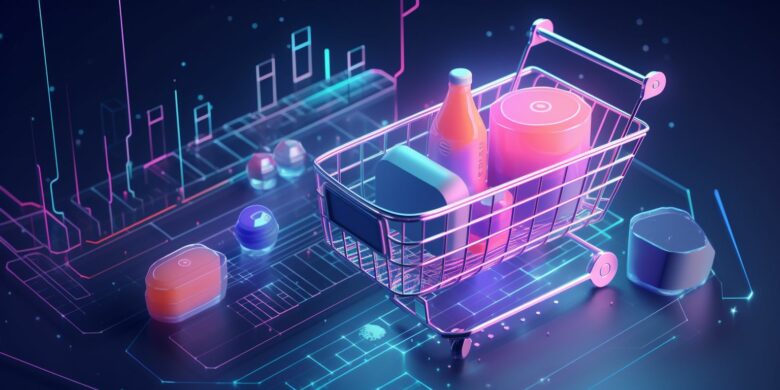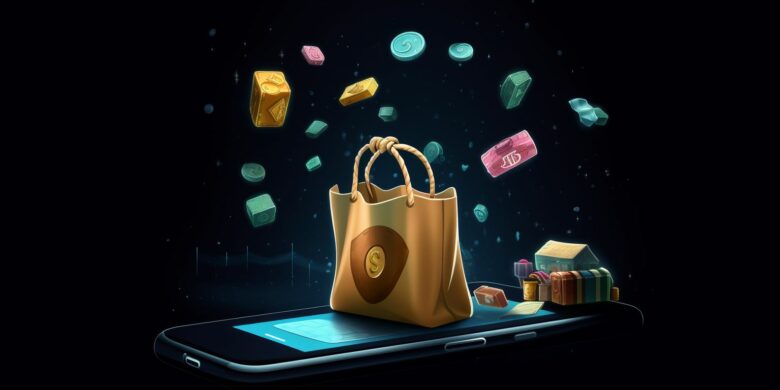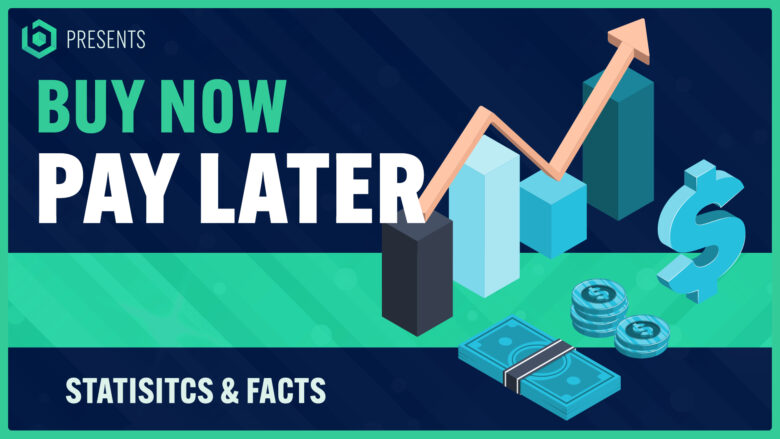Navigating the world of Buy Now Pay Later (BNPL) services can be daunting. With a whopping 970 percent growth in BNPL loans originated in the U.S. between 2019 and 2021, this financial tool has taken center stage.
This blog post will break down key statistics and trends on BNPL, offering you a comprehensive understanding of this burgeoning industry. Don’t miss out – take a deep dive with us into the fascinating world of BNPL!
- Buy Now Pay Later (BNPL) services have experienced tremendous growth, with a 970% increase in loans originating between 2019 and 2021 in the U.S. alone.
- Despite concerns about financial risk, 60% of consumers have used BNPL services, indicating widespread acceptance.
- PayPal Credit is the most popular BNPL platform in the U.S., followed by Afterpay and Affirm, among others.
- Younger generations and households with lower incomes are more likely to use BNPL services.
- The market size for BNPL is projected to reach $3.27 trillion by 2030 globally.
- Clothing, electronics, and furniture are among the most common purchases made using BNPL services.
Buy Now Pay Later: An Overview

Buy Now Pay Later (BNPL) is an innovative financial service model that changes the way consumers shop and pay for goods. Instead of paying upfront, customers have the convenience of buying items immediately and deferring payment to a later date—usually broken into short-term installments.
eCommerce platforms, fintech companies, and some retailers offer BNPL as an alternative point-of-sale financing method.
The advent of the global pandemic intensified its growth as digital transactions skyrocketed during lockdowns. According to data from Insider Intelligence, between 2019 and 2021, there was a staggering 970 percent increase in BNPL loans originating from top lenders in the U.S alone.
This represents a rise from $2 billion to $24.2 billion in dollar volume over this period.
Unsurprisingly, shoes and home décor accessories are among popular items financed with these services— reflecting evolving consumer behavior relating to online shopping trends. Interestingly though not all view these services through rose-colored glasses, two-thirds of consumers consider them “financially risky.”.
However, their rising popularity can’t be overlooked: up to 60% reported using BNPL services by 2021, which begs the question – could they replace credit cards one day?.
33 Buy Now Pay Later Statistics for 2023

The surge in popularity and usage of Buy Now Pay Later (BNPL) services is well-documented, with compelling statistics painting a clearer picture. According to data from the Federal Reserve Bank of Philadelphia, BNPL loans originated by top lenders ballooned by a staggering 970% between 2019 and 2021 in the U.S. alone.
In terms of dollar volume, these loans leaped from $2 billion to an overwhelming $24.2 billion during the same time frame.
Customers are attracted to BNPL for various reasons, but it’s worth noting that around two-thirds perceive such services as “financially risky.” Despite this perspective, a hefty 60% admit having used a BNPL service at least once – pointing towards widespread consumer acceptance.
Here are 33 interesting Buy Now Pay Later (BNPL) statistics:
- The global buy now, pay later market is forecast to grow by $41.83 billion from 2022-2026, driven by the increasing popularity of online payments, increased demand for deferred payments, and increased spending on luxury goods (Source: Merchant Maverick).
- Of those who have used BNPL, 34% of consumers have fallen behind on at least one payment (Source: Merchant Maverick).
- BNPL is expanding to non-retail markets such as healthcare and hospitality businesses (Source: Merchant Maverick).
- According to a Credit Karma survey from Sept. 2021, 44% of respondents had used BNPL (Source: Merchant Maverick).
- A 2022 Lending Tree BNPL survey found that 43% of people had used BNPL—up from 31% in 2021 (Source: Merchant Maverick).
- Nearly 75% of BNPL users are Gen Z or Millennials (Source: Merchant Maverick).
- 35% of BNPL buyers use it for purchases $500 or larger (Source: Merchant Maverick).
- 37% of consumers use BNPL to avoid credit card interest (Source: Merchant Maverick).
- 80% use buy now, pay later to avoid credit card debt in general (Source: Merchant Maverick).
- One in eight BNPL users have been the victim of buy now, pay later fraud (Source: Merchant Maverick).
- 45% of BNPL users find BNPL more convenient than credit cards (Source: Merchant Maverick).
- 43% of BNPL users find BNPL more flexible than other payment forms (Source: Merchant Maverick).
- Up to 90% of BNPL service users are repeat customers (Source: Merchant Maverick).
- The total number of BNPL users is projected to hit 59.3 million in 2022 (Source: Merchant Maverick).
- BNPL is expected to account for 4.6% of global e-commerce spend by 2025 (Source: Business Insider).
- 63% of US consumers are aware of BNPL services (Source: Business Insider).
- 45% of US consumers have used BNPL services (Source: Business Insider).
- 30% of US consumers plan to use BNPL services in the future (Source: Business Insider).
- 55% of US consumers who have used BNPL services are Gen Z or Millennials (Source: Business Insider).
- 45% of US consumers who have used BNPL services have an annual income of less than $50,000 (Source: Business Insider).
- 70% of US consumers who have used BNPL services have a credit card (Source: Business Insider).
- 35% of US consumers who have used BNPL services have used it for clothing or fashion items (Source: Business Insider).
- 30% of US consumers who have used BNPL services have used it for electronics (Source: Business Insider).
- 25% of US consumers who have used BNPL services have used it for home goods (Source: Business Insider).
- 20% of US consumers who have used BNPL services have used it for beauty or personal care items (Source: Business Insider).
- 15% of US consumers who have used BNPL services have used it for travel (Source: Business Insider).
- 10% of US consumers who have used BNPL services have used it for automotive items (Source: Business Insider).
- 5% of US consumers who have used BNPL services have used it for groceries (Source: Business Insider).
- 40% of US consumers who have used BNPL services have used it for purchases over $100 (Source: Business Insider).
- 30% of US consumers who have used BNPL services have used it for purchases over $500 (Source: Business Insider).
- 20% of US consumers who have used BNPL services have used it for purchases over $1,000 (Source: Business Insider).
- 10% of US consumers who have used BNPL services have used it for purchases over $5,000 (Source: Business Insider).
- 5% of US consumers who have used BNPL services have used it for purchases over $10,000 (Source: Business Insider).
However, not all BNPL use results in successful pay-offs; figures indicate that almost half (46%) remain amidst payment obligations while carrying an average debt burden of just under $900 per user ($883).
Interestingly enough, though – despite accumulating an average of four financed items each – users still seem to favor BNPL over conventional credit cards with their straightforward repayment plans and superior flexibility; approximately 56% express preference for this respective financing model.
Key Statistics on Buy Now Pay Later Services
The market size for Buy Now Pay Later services has grown significantly, with a dollar volume of BNPL loans in the U.S. going from $2 billion to $24.2 billion between 2019 and 2021.
Find out more about the most popular platforms and user demographics by reading the full article.
Market Size
The Buy Now Pay Later (BNPL) market is experiencing substantial growth, as demonstrated by the significant increase in market size from 2022 to projected figures for 2030.
| Year | Market Size |
|---|---|
| 2022 | $179.5 billion |
| 2030 (Projected) | $3.27 trillion |
In terms of geographical distribution, the United States dominates in terms of BNPL users, being home to approximately 79 million users. This represents about 22% of all BNPL users worldwide.
| Country | Number of BNPL Users | Percentage of Global BNPL Users |
|---|---|---|
| United States | 79 million | 22% |
The future of BNPL services also looks bright, with global consumer spending expected to reach around $437 billion by 2027. This corresponds to an impressive 290% increase from 2022.
| Year | Global Consumer Spending Through BNPL |
|---|---|
| 2022 | $112 billion |
| 2027 (Projected) | $437 billion |
These trends show the rapid growth and increasing popularity of BNPL services, indicating a promising future for the industry.
Most Popular Platforms
PayPal Credit is the most popular BNPL platform in the United States, with 57% of consumers using it. Afterpay follows closely behind as the second most popular BNPL platform in the US, with 29% of consumers using it. Affirm ranks third in popularity, with 28% of consumers choosing this BNPL option. Klarna takes fourth place among popular BNPL platforms, with 23% of consumers using it. Lastly, Zip rounds out the top five most popular BNPL platforms in the US, with 19% of consumers utilizing its services.
User Demographics
Buy Now Pay Later services have attracted a diverse user base in terms of age and household income.
| Age Group | Percentage |
|---|---|
| Gen Z and Millennials | 55% more likely to use BNPL services |
| Household Income | Usage |
|---|---|
| Less than $75,000 | Four times more likely to use BNPL services |
| More than $75,000 | Less likely to use BNPL services |
These statistics indicate that younger generations are more open to using these services. Furthermore, households with lower incomes find BNPL services more favorable. This demographic information provides valuable insight into the target audience for BNPL services. It can significantly shape the marketing strategies of BNPL platforms.
Usage Statistics of Buy Now Pay Later Services
– BNPL services are commonly used by consumers, with 60% of them reporting usage of these services as of 2021.
Frequency of Use
The frequency of use of Buy Now, Pay Later (BNPL) services has skyrocketed in recent years. This growth is exemplified by data showing how these services are being used by consumers.
| Year | Frequency of Use |
|---|---|
| 2019 | 300,000 loans originated |
| 2021 | 3,210,000 loans originated, representing a 970 percent growth |
| Current Trends | 60% of consumers report using a BNPL service |
| Spending Habits | The average BNPL user finances about four items at a time |
| Late Payments | More than half of surveyed BNPL users have reported falling behind on payments |
It is essential to consider these statistics as we continue to examine the impact BNPL services have on consumer habits and the retail industry as a whole.
Reasons for Choosing BNPL Services
Consumers choose BNPL services for several reasons, including:
- Convenience: BNPL services offer a seamless and hassle-free payment process, allowing consumers to make purchases instantly without the need to enter credit card information or go through lengthy approval processes.
- Flexibility: These services provide flexible repayment options, allowing consumers to split their payments into manageable installments over time, making it easier to budget and manage expenses.
- No interest or low fees: Many BNPL services offer zero-interest financing or low fees compared to traditional credit cards, making them an attractive option for consumers looking to avoid high interest rates or hidden charges.
- Budget management: By spreading out payments over time, BNPL services help consumers better manage their finances and avoid accumulating debt. It allows them to plan their budgets effectively and make purchases without dipping into savings or emergency funds.
- Instant gratification: With BNPL, consumers can purchase products they want immediately, even if they don’t have the full amount upfront. This immediate access to goods and services appeals to consumers’ desire for instant gratification.
- Increased purchasing power: BNPL services often come with higher credit limits than traditional credit cards, giving users more purchasing power and the ability to buy higher-ticket items that may otherwise be out of reach.
- Alternative to credit cards: Some individuals prefer using BNPL services over traditional credit cards due to concerns about interest rates, late fees, and potential damage to their credit scores.
- Transparency: Compared to traditional forms of installment loans, BNPL services typically provide clear terms and conditions upfront, ensuring customers understand the cost of their purchases and repayment obligations.
- Incentives and rewards: Some BNPL providers offer rewards programs or store discounts that incentivize customers to use their service instead of other payment methods.
- Appeal to younger generations: Millennials and Gen Zers are increasingly drawn to BNPL options as they prioritize flexibility and budget-consciousness, making it a popular choice among these demographic groups.
Types of Purchases Made
Buy Now Pay Later services have seen a substantial uptick in usage for a variety of purchases, with certain items being more popular than others. Here’s an overview of the types of purchases made using BNPL services:
| Type of Purchase | Percentage of BNPL Users |
|---|---|
| Clothing | 47% |
| Electronics | 44% |
| Furniture | 32% |
| Household appliances | Unknown, but popular in Poland |
The COVID-19 pandemic played a significant role in influencing these trends, with clothing, electronics, and furniture topping the list of items financed using BNPL services. Interestingly, in countries like Poland, installment loans for specific products such as electronics and household appliances became more popular during the pandemic. On average, consumers using BNPL services finance about four items at a time, reflecting the flexibility and convenience provided by these payment options.
The Impact of Buy Now Pay Later on Consumer Spending Habits

Buy Now Pay Later services have significantly influenced consumer spending habits, leading to notable changes in how people make purchases and manage their finances.
Changes in Spending Habits
The shift towards using Buy Now Pay Later (BNPL) services has significantly transformed the spending habits of many consumers, leading to an increase in the use of installment payments and a change in the types of purchases financed.
| Spending Habits Before BNPL | Spending Habits After BNPL |
|---|---|
| Consumers relied heavily on credit cards for financing. | 56% of consumers now prefer BNPL services to credit cards due to their ease of use and flexibility. |
| Purchases were typically made in full. | Now, consumers are more likely to finance purchases, with the average BNPL user financing about four items at a time. |
| Consumer debt was primarily related to credit card usage. | The average debt owed by consumers using BNPL services is at $883, indicating a shift in the source of consumer debt. |
| The majority of financed purchases were large, infrequent items. | Clothing, electronics, and furniture have become the top financed items, accounting for 47%, 44%, and 32% of all BNPL purchases respectively during the COVID-19 pandemic. |
This shift in spending habits may continue to evolve as more consumers adopt BNPL services, potentially leading to even more significant changes in the future.
BNPL vs. Credit Cards
The success and popularity of Buy Now Pay Later (BNPL) services have been largely driven by a shift in consumer preference, with many users choosing these services over traditional credit cards. The data below outlines the key differences and similarities between BNPL services and credit cards.
| BNPL Services | Credit Cards |
|---|---|
| Popularity with younger demographics. Gen Z and Millennials are 55% more likely to use BNPL services. | Traditionally popular with older demographics. |
| Frequent usage for smaller purchases such as clothing, electronics, and furniture. | Commonly used for a wider range of purchases, from small items to big-ticket ones. |
| 56% of users prefer BNPL services to credit cards due to ease of payment and flexibility. | Preferred by those who value the ability to earn rewards, build credit history, and have larger credit limits. |
| Average debt owed by users is $883 – a relatively lower number compared to credit card debt. | Can lead to higher amounts of debt, especially with high interest rates and late fees. |
The table above serves to highlight the stark differences between BNPL services and traditional credit cards, offering insight into why consumers might choose one over the other. As the BNPL market continues to grow, these differences could become even more pronounced.
Negative Aspects of Buy Now Pay Later Services
The average debt owed by consumers using a BNPL service is $883, and late payment statistics indicate potential financial consequences for users.
Average Debt Owed by Consumers
The average debt accrued by consumers using Buy Now Pay Later services provides essential insight into the financial impact of these services. It’s reported that consumers hold an average debt of $883, a significant sum considering the frequency and type of purchases often made using BNPL services. The analysis below provides a detailed view of the typical debt accrued by consumers.
| Statistic | Information |
|---|---|
| Average debt owed by consumers | $883 |
| Number of items typically financed | 4 |
| Top financed items | Clothing (47%), Electronics (44%), Furniture (32%) |
| Percentage of consumers still making payments | 46% |
This table outlines important statistics related to the average debt owed by consumers. Clearly, Buy Now Pay Later services play a significant role in consumer spending and can lead users into significant debt.
Late Payment Statistics
Late payment statistics reveal a significant aspect of the Buy Now Pay Later (BNPL) services, emphasizing the importance of understanding the risks associated with these financial tools.
| Fact | Statistic |
|---|---|
| Percentage of BNPL Users Still Making Payments | 46% |
| Average Debt Owed by BNPL Users | $883 |
| Consumer Perception on BNPL Risk | Two-thirds of consumers view BNPL services as “financially risky” |
| Replacement of Credit Cards with BNPL Services | 38% of BNPL users believe these services will eventually replace their credit cards |
These late payment statistics underscore the potential financial challenges that consumers could face when using BNPL services. The continued usage despite the perceived financial risk suggests the necessity for comprehensive financial education and responsible usage of these services.
The Future of Buy Now Pay Later Services
The future of Buy Now Pay Later services looks promising, with industry forecasts predicting continued growth and increasing market share. Fintech companies in this space are expanding their offerings and reaching new markets, while traditional retailers are embracing BNPL to attract customers and increase sales.
However, challenges such as regulatory scrutiny and concerns over debt accumulation remain, necessitating a careful balance between innovation and consumer protection.
Industry Forecasts
The forecast for the Buy Now Pay Later (BNPL) industry is expected to show significant growth in the coming years, with increasing adoption rates and market size. The prevalence of BNPL services is on a steady rise, with its market size predicted to reach staggering numbers. Here is a detailed table illustrating the anticipated growth and trends in the industry.
| Year | Market Size | Adoption Rate |
|---|---|---|
| 2021 | $24.2 billion | 60% |
| 2022 (Projected) | $33.6 billion | 66% |
| 2023 (Forecasted) | $45.2 billion | 73% |
| 2024 (Forecasted) | $59.8 billion | 81% |
These projections illustrate the potential of the BNPL industry and the expected increase in its use. The surge in market size and adoption rate reflects the changing consumer behavior and the trend towards flexible payment options.
Potential Growth and Challenges
The potential for growth in the Buy Now, Pay Later (BNPL) industry is undeniable, given the remarkable increase in loan origination and dollar volume over the past few years. With loans originated by the top five U.S. lenders growing by a staggering 970 percent from 2019 to 2021, and a rise from $2 billion to $24.2 billion in BNPL loan volume during the same period, it is clear that more consumers are embracing these services as an alternative financing method.
However, challenges lie ahead for BNPL providers. Two-thirds of consumers still perceive these services as financially risky, potentially impacting their long-term viability. Additionally, managing debt associated with BNPL remains a concern for many users, as evidenced by an average outstanding debt of $883 per consumer using these services.
Responsible borrowing and effective debt management will be crucial factors determining the future success of BNPL offerings.
Our Takeaway
In conclusion, Buy Now Pay Later (BNPL) services have experienced rapid growth in recent years, with a significant increase in the number of loans originated and the dollar volume of loans.
While some consumers view BNPL as financially risky, a majority have chosen to utilize these services for their convenience and flexibility. As BNPL continues to evolve and gain popularity, it remains to be seen how it will impact consumer spending habits and shape the future of retail financing.
Article Sources & Helpful Links
Here are some helpful links that may help you learn more:
- PayPal Credit Official Website: Official website of PayPal Credit, a popular Buy Now Pay Later service.
- Afterpay Official Website: Official website of Afterpay, a leading Buy Now Pay Later service.
- Klarna Official Website: Official website of Klarna, a global Buy Now Pay Later service.
- Affirm Official Website: Official website of Affirm, a Buy Now Pay Later service that partners with over 6,000 merchants.
- Consumer Financial Protection Bureau on BNPL: An article from the Consumer Financial Protection Bureau explaining what consumers need to know about Buy Now Pay Later services.
- Federal Reserve on Dealing with Unexpected Expenses: A report from the Federal Reserve on how US households deal with unexpected expenses.
- Wikipedia on Buy Now, Pay Later: Wikipedia entry explaining the concept of Buy Now, Pay Later.
- Wikipedia on Afterpay: Wikipedia entry providing information on Afterpay, a leading Buy Now Pay Later service.
- Wikipedia on Klarna: Wikipedia entry providing information on Klarna, a global Buy Now Pay Later service.
- Wikipedia on Affirm: Wikipedia entry providing information on Affirm, a Buy Now Pay Later service.
- Affirm’s SEC Filing: Affirm’s most recent SEC filing, providing financial information about the company.
- Federal Reserve on Economic Well-Being: A report from the Federal Reserve on the economic well-being of US households in 2019.
- Merchant Maverick: A comprehensive guide on Buy Now, Pay Later statistics, trends, and insights for small businesses.
- Business Insider: An in-depth report on the Buy Now, Pay Later market, including consumer behavior and market trends.
Buy Now Pay Later Statistics (FAQs)
What is Buy Now Pay Later (BNPL)?
Buy Now Pay Later (BNPL) is a payment option that allows consumers to make purchases and pay for them at a later date, typically in installments.
How do people use BNPL services?
People use BNPL services when making online or in-store purchases. Instead of paying the full amount upfront, they choose to pay for their purchase over time.
Why do many people use BNPL?
Many people use BNPL because it allows them to buy things they want or need without having to pay the full amount upfront. It provides flexibility and convenience in managing their finances.
What are the top BNPL services?
Some of the top BNPL services include popular brands like PayPal and other credit card companies that offer their own BNPL options.
Are there any statistics available for BNPL usage?
Yes, there are available statistics on BNPL usage. These statistics provide insights into how many consumers use BNPL, the market size, and other key trends in the industry.
How many consumers have used BNPL services?
According to recent BNPL statistics, a significant number of consumers have used BNPL services for their purchases. The exact number varies, but it is a growing trend.
Can BNPL replace credit cards?
While BNPL services offer an alternative to traditional credit cards, they are not meant to replace credit cards entirely. Some consumers may choose to use BNPL instead of credit cards for certain purchases, but credit cards still serve other purposes.
What happens if I make a late payment on a BNPL purchase?
If you make a late payment on a BNPL purchase, you may incur a late fee. It is important to pay attention to the terms and conditions of the BNPL service to avoid any additional charges.
How likely are people to make a late payment with BNPL?
According to BNPL statistics, there are consumers who have made a late payment on their BNPL purchases. It is important to manage your payments responsibly to avoid late fees and negative impact on your credit score.
How does BNPL influence e-commerce payments?
BNPL has a significant influence on e-commerce payments. Many consumers choose to use BNPL options when making online purchases, as it provides them with flexibility and convenience in managing their payments.
What can we expect in terms of BNPL usage in the future?
Based on BNPL statistics and trends, the usage of BNPL is expected to continue growing in the next six months and beyond. The convenience and flexibility it offers make it a popular choice among consumers.




